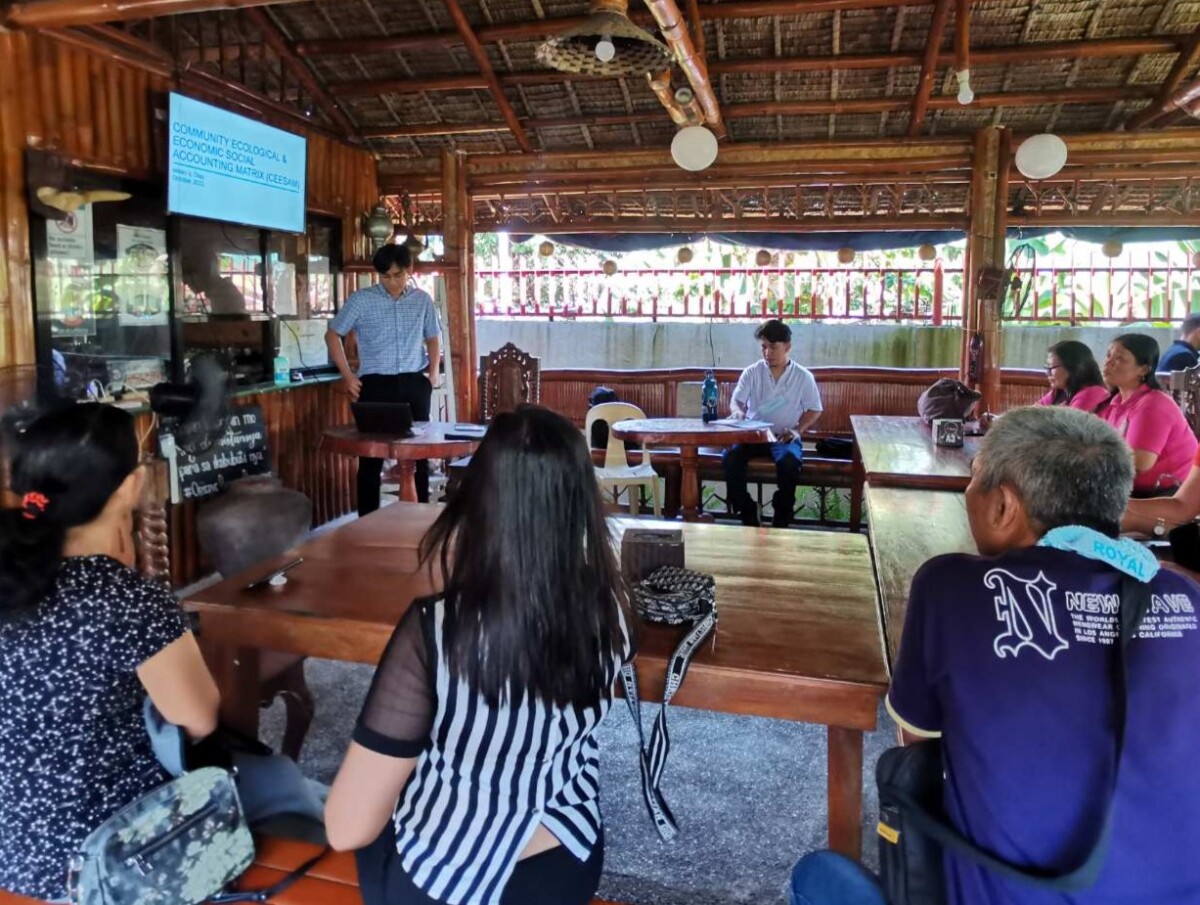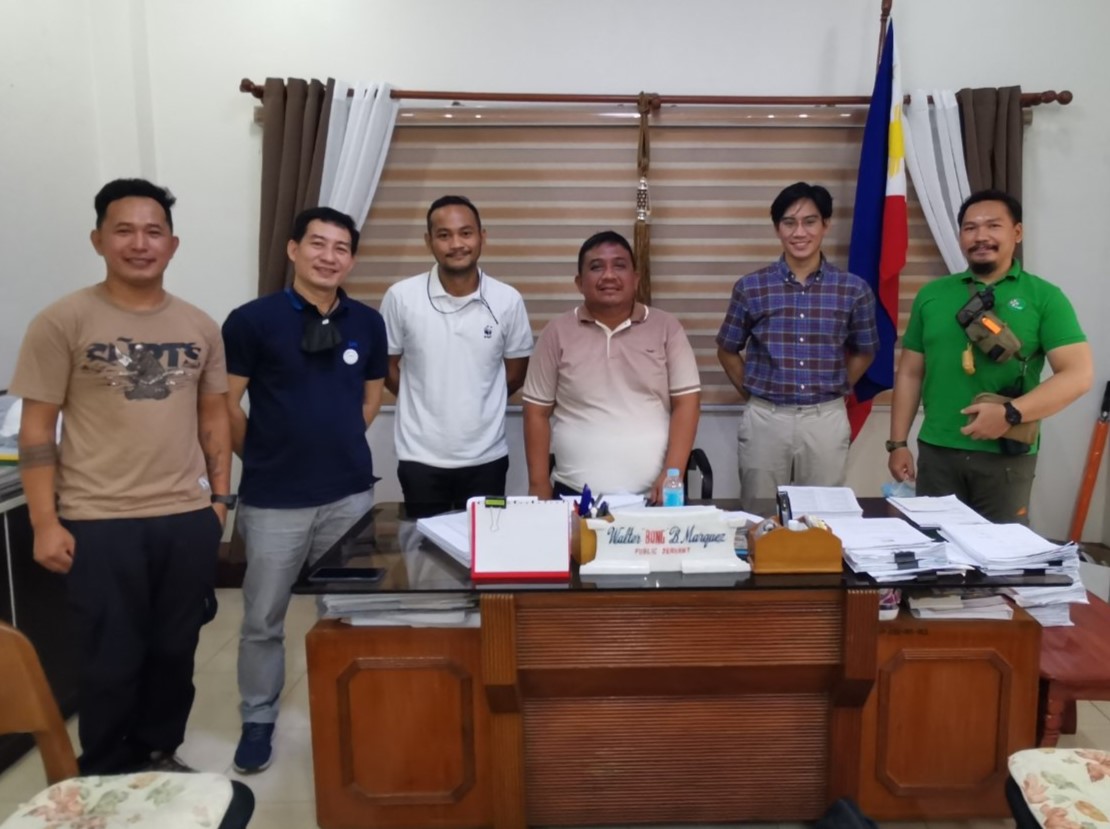Project Buhay conducts CEESAM Analysis in Occidental Mindoro
To kickoff the implementation of WWF-Philippines’ Project Buhay: Tuna Habambuhay, Dagdag Hanapbuhay, the team began the conduct of a Comprehensive Ecological and Economic Social Accounting Matrix (CEESAM) analysis in three municipalities of Occidental Mindoro - Rizal, Sablayan and Mamburao. Project Buhay, a €1.5 million project funded by the European Union (EU) through their SWITCH-Asia Grants Programme, will run until January 2025. It aims to help tuna fishers earn more by improving catch quality, reducing post-harvest losses, and identifying alternative livelihoods through various community interventions. To better understand the impact of these interventions on the local economy and to identify other relevant solutions, there needs to be a characterization of the economic, ecological, and social performance of fisheries in Occidental Mindoro.

Mikko Diaz, Project Buhay’s CEESAM consultant, conducting a briefing session in Mamburao.
CEESAM is an economic tool derived from the Input-Output Matrix (IO) which records a snapshot of what the economy looks like at a certain period in time. From this data, a linear economic model will be created to assess the ripple effect of future investments, projects, or programs to other interlinking industries, like fishing, farming, livestock, manufacturing, etc., and households involved in these industries. Taking it a step further, Sixto K. Roxas, former Chairman of the National Economic Council (presently known as the National Economic and Development Authority or NEDA), extended this analysis to include ecological footprint calculations for each industry, giving birth to what CEESAM is today. Ecological footprint measures how fast we consume resources and generate waste compared to how fast nature can absorb our waste and regenerate. In summary, CEESAM not only measures the economic impact of interventions on industries and its social impact on households, but also its environmental impact.

Members of the Project Buhay team and Diaz, along with GIS analyst, Francis Gasgonia, during a courtesy call with Sablayan Mayor Bong Marquez. (L-R: Romer Imperial, Severino Salva, Joseph Eijansantos, Mayor Walter “Bong” Marquez, Mikko Diaz, Francis Gasgonia)
Mikko Diaz, Project Buhay’s CEESAM Consultant, emphasizes the two (2) major contributions of the study to the project: baseline data and a development planning tool. The data gathered by the study would serve as the project’s baseline data before implementation of planned interventions. In 2025, this would be used to measure the impact of project activities and determine if they were effective. As a development planning tool, it can be used to determine how other industries will be affected if a project or program is implemented in a specific industry. This would especially be useful for justifying policies and aiding in industry planning.
Beyond 2025, after the completion of Project Buhay, the results of the CEESAM analysis can still be useful to the local government units (LGU) of Occidental Mindoro. The team and Diaz aim to turnover the forecasting tool to the LGU so they can continue updating the data, and use the analysis tool to determine industry gaps and potential impacts of proposed programs. The results of the CEESAM analysis will be available by June 2023.
This article was produced with the financial support of the European Union. Its contents are the sole responsibility of WWF-Philippines and do not necessarily reflect the views of the European Union.
For more information, please contact:
Ms. Melody Melo-Rijk
Project Manager
Project Buhay (a.k.a Mindoro Strait Sustainable and Equitable Tuna for Bankability)
mmelorijk@wwf.org.ph
Ms. Lorayne Roque
Integrated Marketing Communications Specialist
Project Buhay (a.k.a Mindoro Strait Sustainable and Equitable Tuna for Bankability)
lroque@wwf.org.ph
About WWF:
WWF is one of the world’s largest and most respected independent conservation organizations, with over 5 million supporters and a global network active in over 100 countries. WWF's mission is to stop the degradation of the Earth's natural environment and to build a future in which humans live in harmony with nature, by conserving the world's biological diversity, ensuring that the use of renewable natural resources is sustainable, and promoting the reduction of pollution and wasteful consumption.
WWF-Philippines has been successfully implementing various conservation projects to help protect some of the most biologically-significant ecosystems in Asia since its establishment as the 26th national organization of the WWF network in 1997.
About Project Buhay:
Project Buhay, internationally known as “Mindoro Strait Sustainable and Equitable Tuna for Bankability” project, is funded by the European Union through their Switch Asia Grants Programme. It aims to make the tuna fishing industry of Occidental Mindoro sustainable and equitable by equipping fishers with proper tuna post-processing knowledge and resources, identifying and growing alternative livelihoods, creating a portfolio of bankable projects, and sharing community stories to inspire replication in other communities. This project will run until January 2025.
About SWITCH Asia:
Launched in 2007, the SWITCH-Asia programme is the largest European Union-funded programme promoting Sustainable Consumption and Production (SCP) supporting 24 countries in Asia and Central Asia. The overall objective of the programme is to promote sustainable and inclusive growth, contribute to the economic prosperity and poverty reduction in Asia and Central Asia and to a transition towards a low-carbon, resource-efficient and circular economy. Learn more at: www.switch-asia.eu

